“The past decade has witnessed a dramatic increase in our knowledge on cancer on multiple scales leading to a host of potential drug targets and subsequent clinical trials. Yet the outcome for many cancers has not improved (1).” … “Unfortunately, there is not yet a theoretical approach that can harness the spectrum of cancer knowledge towards usable predictions.”
Towards a Science of Tumor Forecasting for Clinical Oncology,T E Yankeelov, V Quaranta, K J Evans, E C Rerich, 2015
“Methods used in this study could generate serum peptidome profiles of BC (breast cancer), and provide a new approach to identify potential biomarkers for diagnosis as well as prognosis of this malignancy.”
Identification of novel serum peptides biomarkers for female breast
cancer patients in Western China, J Yang, et al., 2016
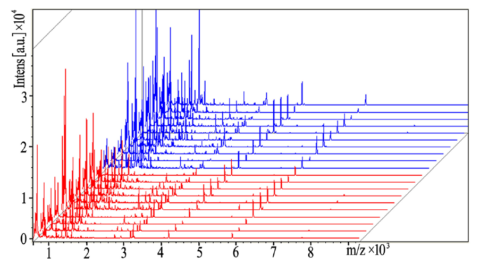
Figure 1 View of the aligned mass spectra of the serum protein profiles of the model construction group (red represents healthy volunteers, and blue denotes breast cancer patients) obtained using MALDI-TOF after purification with IMAC-MBs.
“Matrix-assisted laser desorption/ionization time-of-flight MS (MALDI-TOF MS) can detect peptides with low molecular weights with the necessary sensitivity and resolution, which makes it a useful technique for serum peptide profiling.”
Serum peptidome patterns of breast cancer based on magnetic bead separation and mass spectrometry analysis
Nai-Jun Fan et al., 2012

Measurement
One example of the medical research community’s discovery and acceptance that medicine is being redefined. In 2000, an article was published which sought to define the key characteristics common to all cancers. Their article, entitled, “The Hallmarks of Cancer,” attempted to outline and describe these key characteristics. In 2011, the same authors published a revised, updated paper, entitled “Hallmarks of Cancer: The Next Generation.” Once again, the authors were attempting to describe the key characteristics common to all cancers, with the addition of newly discovered characteristics gleaned from recent research. In their article, the authors termed the newly identified characteristics to be “emerging hallmarks.” The new hallmarks of cancer included inflammation, changes in cell metabolism, cells avoiding immune response and recognition of the role of the tumor microenvironment. Today, these emerging hallmarks are now validated and accepted characteristics of all cancers. This understanding is part of a revolution, at minimum, a revolution of awareness.
Technologies introduced in recent years have presented the opportunity and obligation to reevaluate our definitions and our approach to all disease, including all cancers. Cancer has in fact, been redefined, decades-old theories previously discarded, have now been validated.
These technologies and analysis devices have provided the ability to consistently and precisely identify disease processes at the cell level. Biomarkers of these processes represent the expansive world of cell signaling. Thousands of research studies have mapped these signaling pathways of disease and verified their existence, roles, relevance and consequences. The disease microenvironment is comprised of a multitude of signaling agents. Cell signaling in the disease environment is continuous, dynamic, reactive and redundant. Taken as a whole, this environment is overwhelmingly complex. However, when these processes and resulting cell signaling are organized in a hierarchy of events and their consequences, we can recognize their relevance to current disease processes at the cell level. We can achieve order from chaos.
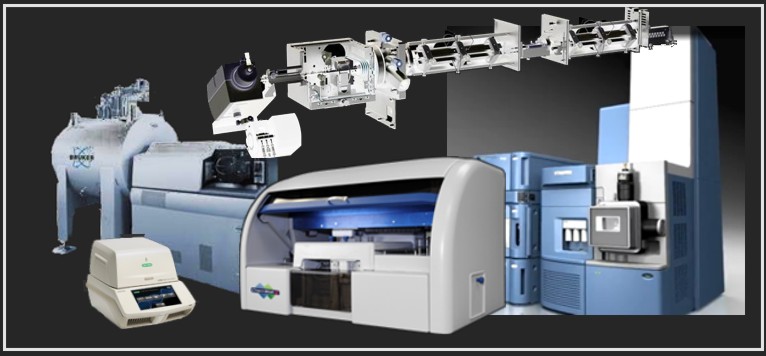
New technologies have validated discovery and accelerated research. One example, a device with significant impact is, MALDI-TOF-MS, Matrix-assisted Laser Desorption/Ionizaton – Time of Flight – Mass Spectroscopy, which utilizes an ionization technique in mass spectroscopy to identify biomolecules (cell signaling agents) accurately and consistently. Thousands of published studies documenting the application, commercial availability of devices, along with acceptable cost of equipment or test, has accelerated research and discovery. An indication of the advancement of the science many devices, methods and resources have been developed with superior accuracy and reproducibility, high throughput and low cost. A sampling of technologies, devices and resources include reverse transcription polymerase chain reaction (RT-PCR), methylation-specific multiplex ligation-dependent probe amplification, enzyme-linked immuno-sorbent assay, fluorescence in situ hybridization, National Center for Biotechnology Information, Kyoto gene and genome databases, magnetic nanoparticle imaging, high-throughput data analysis software, gene profiling, micro-array gene filters, electro-kinetic chromotagraphy, atomic force microscopy, circulating tumor cell capture devices, serum markers analysis, fluorescence microscopy, quantitative proteomics, signaling pathways analysis, activity-based proteome profiling, liquid chromatography-tandem mass spectrometry, immobilized metal affinity chromotagraphy, protein and peptide spectrum libraries and many others.
Brand new categories of research in cellular biology have been introduced – genomics, proteomics, transcriptomics and more recently, mutanomics, epigenomics, metabolomics, glycomics and others.
Thousands of research studies (an increasing number!) have confirmed that plant-based agents cure cancer. Is it that these agents are only effective for some cancers, for some patients? The research overwhelming demonstrates that plant-based agents are “significantly” effective against ALL chronic diseases, ALL cancers, every patient, at any stage of disease. These same agents are frequently utilized by researchers to study and document their effects upon distinct, cellular signaling pathways.
Bioavailability (potency!, percentage of the active metabolite delivered to the target) of natural, plant-based agents has improved dramatically which has validated their abilities to destroy cancer cells, to heal chronic diseases. These improvements are significant.
Nanoparticle technology dramatically improves the potency of natural metabolites providing them the capability to better penetrate the cell membrane. Nanoparticle encapsulation or micelle technologies increase bioavailability (potency) in addition to improving targeting of these healing agents directly to diseased tissues and cancers.
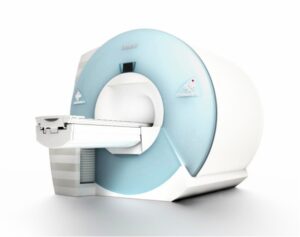
Siemens MRI
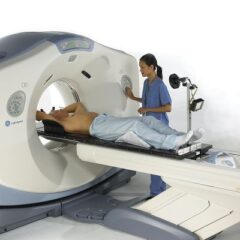
General Electric CT
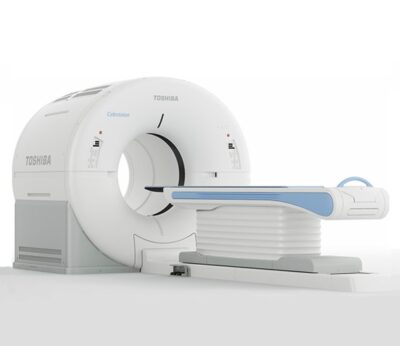
Toshiba PET-CT
Nuclear magnetic resonance imaging (NMR, now MRI), MR spectroscopy (MR-S) and MR diffusion imaging (MR-DWI) have adapted and improved imaging protocols to correlate with results of other diagnostic testing devices, specifically with relevance to cell-level metabolism, cell-based respiration and tissue viability.
Positron emission tomography computerized CT (PET-CT) has improved sensitivity and resolution to track cancer cell metabolism on a macro level, providing an important perspective to verify metabolic and proliferative characteristics of disease.
